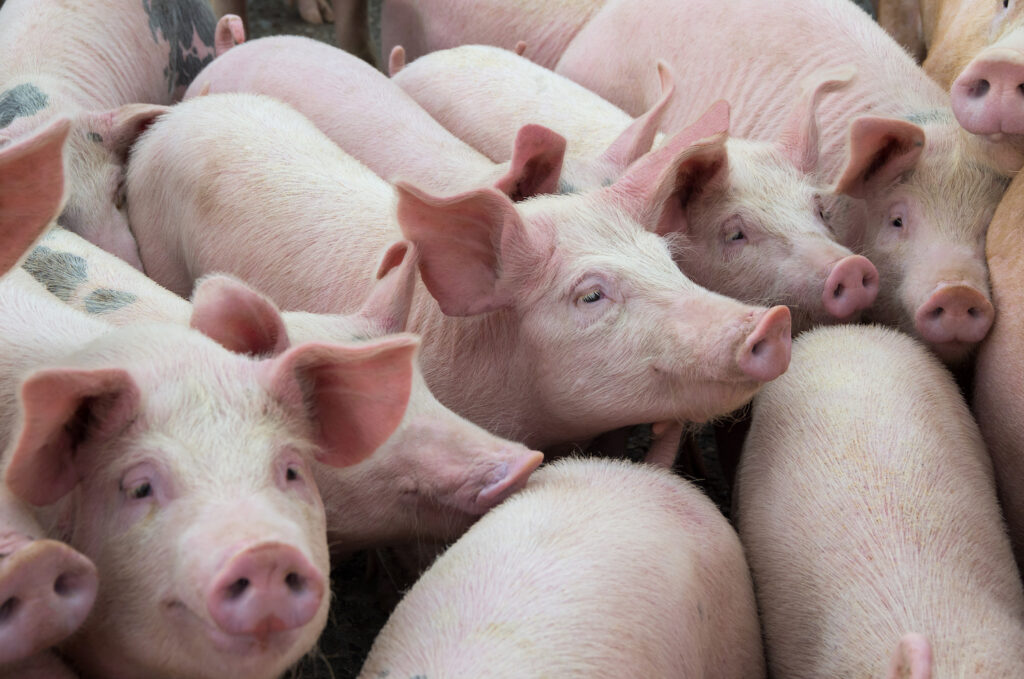A year in Brexit: What does the picture look like now?
5th January 2022
As the UK marks its first tumultuous year outside of the EU, Farmers Guide reflects on the current situation – the outstanding threats, opportunities and what the future may hold for British farmers as a result.

This time last year, the UK’s exit from the EU resulted in chaos at the borders as businesses attempted to navigate a series of rule changes, having had little to no time to prepare after an eleventh-hour deal was struck.
Uncertainty remains rife a year later, with three key areas continuing to cause particular concern – trade deals, labour and the phase out of direct payments. As farmers navigate these complex issues alongside continued pressure to increase standards still further, Farmers Guide spoke to experts about what to expect.
New payment schemes
The shift away from traditional agricultural policy towards a ‘public money for public goods’ approach is significant and is expected to be a particular challenge for the beef, sheep and cereals sectors, which have been more reliant on direct payments.
The question foremost in farmers’ minds will have been, will schemes such as the Sustainable Farming Incentive – which is currently being trialled by around 900 farmers – be enough to offset the BPS phase out? The answer is almost certainly that they will not, says AHDB’s head of strategic insight David Swales.
The SFI is flexible and will allow farmers to choose which standards they get involved in and to what level, but even if they get involved to the nth degree, they are likely to get around two-thirds of the payment they would previously have received, according to AHDB research. It’s also expected that these will be more costly for the farmer to deliver, so this is expected to be a significant challenge, Mr Swales said.
It’s likely farmers will only now be starting to feel the impact of the phase out of direct payments, with many seeing a 5% decrease in 2021, but this will escalate quickly over the seven years, and will be at least half the current payment by 2024.
Mr Swales urged farmers to use the AHDB’s BPS reduction calculator and other tools to calculate how the change will affect them over the next seven years.
Trade: Fears and opportunities
Increase in trade friction with the EU has arguably been the most noticeable change thus far. Whilst Mr Swales believes a lot of the initial problems seen early last year were down to teething problems, trade with the EU remains down over the year – though the EU is still our most important trading partner.
ONS figures to October 2021 show total agri-food exports were down 16% compared to the same period in 2019, with exports to the EU falling most significantly by 22%. Total agri-food imports to the UK were also down by 10% in the first 10 months of the year, and imports from the EU were down 15%.
Problems with exports have tended to hit smaller businesses hardest, with many no longer exporting to the EU due to the increased hassle and cost – resulting in fewer and larger loads and a simplification of the products traded, as a separate export health certificate is now required for each different product type.
So far, the government has agreed 70 deals, many of which are rollover agreements from when we were part of the EU. There is continuity in agreements with Japan and Canada for example, but some of the benefits with Canada are time limited so there will be further negotiations, says the NFU’s chief international trade advisor Gail Soutar.
There has been considerable worry that the UK-Australia free trade agreement, signed at the end of last year – as well as another similar deal with New Zealand that is likely to be signed – sets a precedent for future FTAs. The Australia deal was broadly criticised by farming organisations for appearing to offer little to no benefit for British farmers.
Mr Swales said that while such deals will change the marketplace and increase competition for UK farmers, the effects will not be felt immediately and there could still be positive opportunities in the future as the UK negotiates other deals.

There has been considerable concern over the UK-Australia free trade agreement, signed at the end of last year, but there could still be positive opportunities in the future as the UK negotiates other deals.
While Australia and New Zealand are net exporters, the AHDB would like to see deals with countries in the Asia Pacific region such as China, the Philippines, Indonesia and Vietnam which have a growing middle-class consumer and are net importers of agricultural products.
“There’s a lot of opportunities for UK agriculture if we strike the right trade deals. It’s not all bad news but the initial priorities the government has focused on probably have more threats than opportunities,” he said.
Negotiations going forward include Canada and Mexico, as well as India, which Ms Soutar believes will have a lot of offensive interests. “There’s a massive market and mixture of consumers including some highly affluent consumers that want access to the types of products we produce in the UK. India should have opportunities for us.”
More importantly, she added, there is the CPTPP grouping of 11 countries around the world and the Gulf Cooperation Council, which should pan out as being real opportunities for UK agri-food businesses.
Ultimately though there will be more competition on the UK market for products we can produce here, and some of that will come from countries that are able to compete on price and produce substantial volumes of high-quality product due to economies of scale of production and differences in the regulatory environment.
Ms Soutar says our focus must be to continue to ensure our relationship with our largest trading partner, the EU, is as good as it can be. Total trade with the EU is down – and exports are down considerably. “So, farmers who are suppliers into the nation’s largest manufacturing industry, the food and drink industry, are missing opportunities because some of those exports are not being realised,” she added. Imports are also down which has manifested in prices remaining firm for most farmgate commodities, with pigs being the exception.
We are also likely to see increased pressure as a result of AI on our ability to export poultry meat to the EU and potentially Northern Ireland in the coming months ahead, she warned, so we could see some pressure in the poultry sector as well.
Ms Soutar also stressed the importance of a sensible, pragmatic solution on Northern Ireland between the UK government and the European Commission. “We need to be aware as a farming industry that if talks break down, it could affect not only Northern Ireland farmers and their suppliers but there is also the fear that the EU could take action that could affect exports across the whole of GB to the EU”.

The labour crisis is causing severe hardship for the pig sector in particular.
Labour crisis
The labour crisis – which is causing severe hardship for the pig sector in particular – has been well documented in the press and is not entirely down to Brexit, as there have been implications from the Covid-19 pandemic too, Mr Swales points out. “We are seeing some quite significant increases in labour costs – both for farmers but perhaps initially more significantly for the processing sector.”
The question is whether economic migrants will be able to come and work in butchery type roles which are not currently classed as skilled occupations by the government. Regardless, they will not be able to come as easily as before with the free movement of labour. Salary levels will also go up which may encourage more domestic interest in the roles, he added.
“There’s no immediate fix for that problem unless the government were to put those roles on a shortage list and allow the industry to recruit more easily. It’s a big challenge for the pig sector.”
“Not a universal picture”
Looking over the past year and ahead to the next few years, the impact of Brexit on farming is “probably negative” overall, Mr Swales said. “But if you look longer term it’s possible to see real opportunities for red meat and dairy such as other trade deals.”
He added: “New schemes coming on board do present opportunities for farmers to get paid for things they haven’t been paid to do before. Market prices are quite buoyant in some sectors too. Cereals prices really strong most of 2021, and sheep and beef are also pretty strong. Some of that is perversely down to Covid impacts – we’ve seen a really positive impact on the retail and food delivery sectors. Products like beef and lamb tend to perform quite well in those sectors. It’s only really the pig sector that’s got that really difficult price situation.”
Some dairy farms have seen some quite significant increases in milk prices in recent weeks, with some even increasing by 3 pence per litre, which is incredibly rare and really significant.
While there is a lot of optimism in price outlook in some sectors, pig farmers are being hit by a double whammy of cost increases and poor prices. “It’s not a universal picture, but very much sector specific.”
Looking to the year ahead, Ms Soutar points out that from 1st January 2022, we have begun to see full customs controls on EU imports, so she advises farmers to think about what you need for your business – whether it be machinery parts, seed or plant protection products, and don’t rely on the ‘just in time’ model you may have benefitted from in the past. It is highly likely there will be disruption and delays.
In order to help build resilience she advises keeping abreast of developments. “It might feel like so much is changing and it’s difficult to know where to start, but keep up with the NFU website and gov.uk pages to hear about opportunities and changes and think about whether this applies to your business.”
